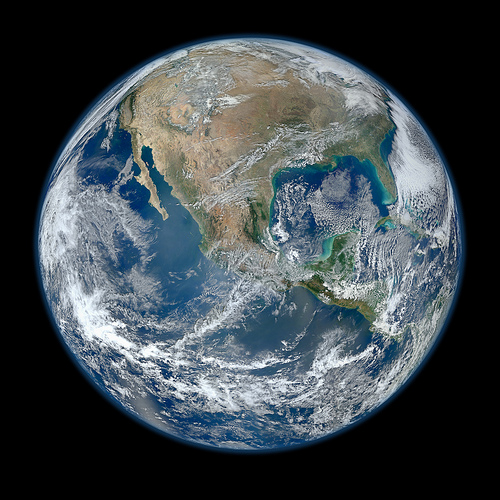Short version of this post: A very cool pedicab driver gave me a free ride a couple weeks ago, and I want to say “thanks again.” I’m also including a pretty picture of the Ferry Building taken on another night altogether, because I like it.
Longer version: Most Fridays, I try to end the work week by walking from my office in Public Radio World, located on the west side of Potrero Hill in San Francisco, over to the Ferry Building, at the foot of Market Street on the Embarcadero, to catch the last boat of the night to Oakland. The favored route is across the summit or upper northern slope of the hill and over to Third Street, then north past AT&T Park and up the waterfront to the ferry. But since it’s a walk with a deadline–the boat has a schedule, and it leaves on time–the route can be adjusted if I’m getting out of the office a little late. I’ve developed a nice zig-zag route across South of Market with what I fancy to be shortcuts through alleys and parking lots. The longest version of the route might be four and a half miles, the shortest is just 100 yards or so under three miles, and the version I usually take is four miles, a distance I can reliably cover in about 55 minutes.
Of course, another variable I can change is speed. I like to stop and take pictures along the way, but I’ll keep that to a minimum if I haven’t left myself a lot of time. Or I can run part of the way. As fun as that sounds, I’m not fond of it because I’ve turned what started out as a relaxing stroll and turns it into a race and I have occasionally wound up at the boat with zero seconds to spare (the captain saw me running up to the dock once and waited for me) and soaked with sweat.
A couple of weeks ago, I had left the office a little late and knew I would be cutting it close. Still, it was a gorgeous evening and I really wanted to go over the hill, longer than the shortest route across town. I can sort of gauge my time and how much I have to hurry by my arrival at the ballpark. When I got there on this evening, I knew I’d have to hustle. So I alternated jogging and walking with backpack and camera up the Embarcadero. About half a mile or so from the ferry, heading to a sweaty finish, I saw three guys who’d just come out of a bar talking to one of the pedicab drivers who work the waterfront. I jogged past. A minute later, the pedicab guy was pulling up alongside me.
“Sir, you look like in kind of a hurry,” he said. “Yeah, yeah,” I said. “Where are you going?” “Just up to the Ferry Building.” I would have liked to have jumped aboard. “You know, I don’t have a dime on me,” I said. “Well, just let me give you a ride,” the driver said. “I’d like to do something nice for you.” So I got in.
The driver’s name was Bill Cummings, and he rides and manages the shop for Cabrio Taxi. He told me he’s had the pedicab gig for two and a half years, and the business has been good enough to him that it’s his only job. Tourists going up to Pier 39, the Alcatraz Ferry, and Fisherman’s Wharf make up a lot of his business, as do people going to and from the ballpark. The Embarcadero bike lanes and weekend traffic congestion around the tourist spots means he can get back and forth faster than people in cars or on public transit. On the other hand, the three guys I saw him talking to before he picked me up were going out to 19th and Mission, several miles into the a heavily driven part of the city–not a terribly safe or attractive trip just as it was getting dark. I had noticed he had the look of a competitive cyclist, and I asked him whether he raced. He said he does Ironman-length triathlons (140.6 events, to the cognoscenti) and that he was in training for one–in New York state, I think.
When we got to the Ferry Building, I offered to go inside to an ATM and pay him. He said no, he really just wanted to do something nice, and it was something he tried to do every day. OK, then. Something nice done, and noted. And below is Bill’s card.


